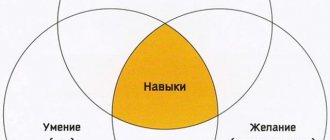Updated July 23, 2021 349 Author: Dmitry Petrov
Hello, dear readers of the KtoNaNovenkogo.ru blog. Subcultures are a phenomenon that fits tightly into our everyday life. Yes, today society strives to erase boundaries and unification.
But just 10-15 years ago, every second (if not the first) teenager identified himself as a member of some youth subculture in an urgent need to stand out.
Today let’s remember our 2000s and talk about this sociological phenomenon, its genesis (what is it?), internal classification and the most striking examples.
Subculture is...
The word itself to designate this social phenomenon came into the Russian language from English by tracing. It’s easy to disassemble Subculture into two components: sub is a native Latin root, an analogue of our “under”, but culture is not difficult to translate.
Thus, a subculture is a “ subculture ”. The term is officially accepted by sociological, anthropological and cultural sciences. Its general interpretation is as follows:
A subculture is a part of a society’s culture that differs in behavior from the prevailing majority. It includes social groups of adherents (how is that?) of this culture.
This concept was first used by David Riesman, a famous lawyer and sociologist from the States. This happened in 1950.
Explaining what a subculture is, he talked about groups of people who deliberately choose values, style, and behavior that are different from the generally accepted ones.
These are individuals who deliberately join the minority because they do not accept the standards of the society in which they live.
In order for a certain social phenomenon that has ideological followers in the form of a clearly defined or conditional social group to be called a subculture, the difference from the dominant culture must be significant. It could be:
- another ideology
- Lifestyle,
- behavior,
- system of values,
- manner of dressing,
- language (slang, sociolect, argot),
- other elements of the same order.
It is important to understand that the main aspects here are ideological, psychological, ideological. Forming your own slang, way of dressing, cliche behavior - all this is only a consequence and a way to show another representative of your group: “ I belong !”
The term "subculture" has historical synonyms that were gradually replaced. Thus, Michel Maffesoli (France) used the combination “urban tribes” when talking about youth groups. Viktor Dolnik (Russia) called them “clubs”.
In the Soviet Union, groups representing youth subcultures were called “Informal Youth Associations.” informals came into use .
Finally, the slang concept of “party” can be used to designate a specific “cell” within a “subculture”.
Afterword
Not all young people from subcultures manage to socialize successfully.
- For some, the subculture becomes just a stage of entertainment, an assistant in finding themselves and their place in society.
- For some, it is a stage before the onset of criminal or addictive behavior. For example, a passion for the Rastafarian culture can result in both successful socialization and the use of hard drugs, i.e., drug addiction. Activists of the pink rock movement can become representatives of gay movements, and goths can “grow” into Satanists.
- In addition to the two mentioned above, there is a third scenario for the development of events for the informal – permanent life within the subculture (“eternal informals”). These people are not taken seriously either by society or by representatives of their own subcultures. As a result, such people do not live, but exist within a very narrow framework, prescribed by them, and in an independently created illusory world.
The energy of youth needs to be channeled in the right direction. It rarely happens that it is impossible to redirect a young person from a destructive and antisocial subculture to a prosocial one. Most often, he just wants to get carried away with something, to be involved, and does not adhere to specific deep-rooted beliefs. Therefore, it is only necessary for him to present an alternative to his subculture in an interesting and competent way from the side of psychological and pedagogical science.
It is necessary not to fight subcultures, but to accept them and communicate in their own language, help in organizing leisure time, and take an interest in their lives. Focus on the benefits of subcultures (development of youth abilities, support in socialization, progress of society). Promote the development of prosocial creative groups.
Types and examples of subcultures
It is quite difficult to classify this phenomenon; at the moment there are no ready-made studies. professional and youth are often distinguished among them .
They say that teachers have their own “subculture”, because their lifestyle and sociolect may differ from the generally accepted one. And so in any profession.
IMHO (what does this mean?), this is far-fetched: such a division really exists in linguistics when we talk about various slangs, and, apparently, by analogy it was transferred to this area. But can we say that teachers deliberately violate socially accepted norms? Hardly.
But it is more than correct to highlight youth subcultures.
Most different trends have always arisen in the circles of young people and teenagers. This is not surprising, because age itself pushes one to self-expression, rebellion, to express oneself in a way that is contrary to what is generally accepted.
However, this is a kind of super class. It doesn't have an antagonist (who is it?) like old man subcultures (although the grannies on the benches are definitely hiding something).
Youth subcultures include almost all current ideological groups. Therefore, in further division, in each case it is worth remembering that this is, to one degree or another, a youth subculture as well.
It is impossible to provide a complete list of subcultures that have existed in history or exist now. If we make an attempt at classification, then the basis for differentiation (what is it?) must be taken from the phenomenon that served as the impetus for the unification of people. Then we get these types of subcultures.
The essence of the term
Subculture
is a concept derived from the Latin words “sub” (under) and “cultura” (culture), and is used in sociology and cultural studies. We are talking about a part of society that differs from the overwhelming majority in its worldview and behavior. Carriers of subcultures may differ from other people in their value system, appearance and other aspects.
Youth subcultures have several varieties and are formed on demographic, national, geographical, professional and other bases.
Most often, one or another subculture “marks” its adherents with certain patterns of behavior, features of appearance (clothing, hairstyles), vocabulary and other distinctive characteristics.
Musical subcultures
Music genres are the foundation on which the loudest, most widely known subcultures were built. First of all, this:
- Hippie. One of the oldest youth musical subcultures, which united adherents of the idea of pacifism and rock lovers.
- Rastafarians. Fans of reggae and the legalization of marijuana, whose subculture has received the status of a religious movement (Rastafarianism).
- Metalheads – lovers of metal music. One of the first representatives of a new wave of vibrant subcultures that appeared in the 1970s and 80s. The most important thing is personal freedom.
- Punks. In addition to their love for punk rock, they are united by pure opposition to society, by rabid political rebellion. “Mom - anarchy, dad - a glass of port” - this goes here.
- Goths. Gloomy, melancholic individuals who listen to gothic rock and trudge through the Victorian era.
- Hip-hop culture. Inside, rap, hip-hop and beatbox are distinguished.
- Emo opened a new era of subcultures that opened in the 90s and 2000s.
These are mainly teenagers who demonstrate sensitivity, vivid emotions and a desire for suicide. The musical style is called the same.
Youth subcultures and their role in modern society
Time flies quickly, and the world adapts to its changes. However, there were always those who considered it necessary to adhere to their chosen ideology, challenging the majority of those around them. In the 20th century, such people united under the term “subcultures” and actively continued the development of their communities.
At first, representatives of these groups opposed the majority in every possible way and were reluctant to accept newcomers into their ranks. Now we have much more freedom in this regard. In the Soviet Union they were called an informal youth union. They were viewed with disapproval and fear, but now the subcultures no longer seem unusual, scary or unhealthy.
They are no longer seen as something categorically negative and even bring some benefit to society. Now people who were previously withdrawn due to fear of being misunderstood can easily find interesting friends, no matter how crazy their hobbies may be.
Members of various subcultures are often teenagers who want to express their protest to adults, and if their choice falls on gopniks and emo, this can lead to problems.
Urban subcultures
These are what we can rightly call “urban tribes.” These include:
- Roofers . They explore abandoned buildings, old industrial or social facilities. They also climb onto the roofs of high-rise buildings.
- Diggers . They travel through underground passages and structures.
- Cybergoths , also known as cyberpunks (see what steampunk is). Genesis of books and games. These are fans of the idea of a man-made apocalypse and life after it. Designed for industrialization.
- Stalkers. They travel to prohibited zones and closed areas.
Some include here hooligans who do not consider themselves a subculture.
But you can add bikers , who often find themselves outside the classifications. These are people for whom the motorcycle has become a way of life. The cult of wheels, roads and complete freedom.
History and origin of the term “subculture”
In the 20th century the number of emerging communities united along some basis increased, and then this phenomenon received the name subculture.
The term was coined by David Riesman, an American sociologist, to refer to people who deliberately adhere to minority views. “Sub” means “under”, respectively, otherwise the word is translated as “subculture”.
Today, the concept of “subculture” is actively used in sociology, anthropology and other social sciences.
Countercultures
The oldest and most established counterculture of the world of organized crime (for example, AUE), based on the concepts of thieves. It has its own hierarchy, laws, rules. Its own musical culture (thieves' song), tattoo.
Another striking example is skinheads . This counterculture has a musical genesis (from reggae and ska), but it has moved far from those roots.
Subsequently, skinheads became deeply politicized. This is how Nazis, anti-communists, etc. appeared.
Classifications of youth subcultures
Research into types of youth subcultures began in the 1970s. We invite you to familiarize yourself with some modern typologies.
Based on the principle of unification
The most popular classification proposed by L.V. Kozilov:
- Political informal associations.
- Religious associations.
- Professional and quasi-professional associations (common cause and interests).
- Association of sports and games.
- Cultural associations (creativity, cognition, analysis).
- Gender associations (gender, other demographic characteristics).
- Ethnic and social associations (common ancestors or imitation of them).
- Criminal communities (community of criminal interests).
- The youth.
- Subcultural (belonging to a subcultural environment).
By types of communities of their carriers
V. Sokolov and Y. Osokin identify the following subcultures:
- based on gender and age;
- social and professional;
- professional-corporate;
- recreational;
- religious;
- ethnic;
- territorial;
- local.
By time of occurrence
T.V. Latysheva identified the following subcultures:
- past (dudes, teddy boys);
- reanimated (hippies, goths);
- modern (role-players, otaku).
According to the principle of formality
Formal and informal youth groups can be distinguished. Formal are youth associations officially registered with the justice authorities:
- Political youth associations (the youth parliament under the State Duma of the Federal Assembly of the Russian Federation, the People's Democratic Youth Union (NDMU), the “OUR” movement, “STEEL”, etc.); All-Russian public youth associations of a non-political nature (“Russian Youth Union”, “Student Self-Government”, “Russian Student Branches”, “The World Is Nearby”, etc.)
- Associations of people with disabilities (“Perspective”, “New Opportunities”, “First Russian Internet portal for people with disabilities”, etc.)
- Youth human rights associations (Equality, New Perspectives Foundation, etc.)
- Environmental youth associations (“Green Sails”, “Forest and We”, “Friends of the Baltic”, etc.)
- Religious youth associations (“Common Cause”).
Informal youth groups are those that are not legally registered or prohibited by law:
- extremists (nationalists, vandals, religious extremists, etc.)
- violent movements (gopniks, punks and others)
- socially dangerous and criminal groups (illegal quasi-religious groups (sects), “black trackers”, destructive mimicking groups).
A subculture is formed on the basis of common beliefs and ideas about life
In relation to society
G. A. Nigmatulina identified tolerant subcultures (bikers, breakers, rappers), nihilistic (majors, beatniks), negative groups (hippies, punks), aggressive (skinheads).
- Representatives of tolerant groups try to isolate themselves as much as possible from the outside world and do not express their attitude towards it.
- Nihilists demonstrate their lifestyle and values, but do not oppose it to generally accepted norms, but offer it as an alternative.
- Negative youth express their dissatisfaction and disgust with the accepted culture, but do not try to destroy it.
- Representatives of aggressive groups directly advocate rejection of mainstream culture and express their attitude through open protests.
As a way of self-expression
I. Sundieva considers each subculture as an amateur activity (cultural, political, social) and a way of self-expression. He distinguishes between aggressive, shocking, alternative, social and political subcultures.
- An aggressive subculture is characterized by a cult of physical strength (a close confrontation between us and them) and an internal hierarchy.
- The shocking subculture involves self-expression through appearance, challenging established norms and rules.
- Alternative culture is the development of behavior, leisure and lifestyle that differs from the generally accepted ones.
- Social culture aims to solve specific social problems (ecological, ethnocultural, charity movements).
- The political subculture has its own ideas and seeks to change the social situation in the country in accordance with these ideas.
Based on the principle of individual inclusion
I propose my classification of youth subcultures based on the principle of a young person’s involvement in the subculture and the magnitude of its influence on the life of an individual.
Superficial subcultures
Characterized by superficial shocking, purely external self-expression. Representatives do not have a specific philosophy, principles, attitudes or values. As a rule, these subcultures are not dangerous. These include:
- hipsters,
- cosplayers.
Subcultures of belief
Subculture beliefs do not affect a person's appearance, but they have a huge impact on his worldview and behavior. They may have their own rules, principles and views. Such subcultures can create threats and problems for society. These include:
- hackers and burglars;
- gamers;
- pagans and neo-pagans.
Subcultures of deep inclusion
Deeply involved subcultures have specific philosophies, worldviews, ideas and try to implement them (by legal and/or illegal means). They have the outward appearance of belonging to some movement. Can develop into cult subcultures. These include:
- hippie,
- punks,
- goths,
- Rastafarians.
Subcultures of worship
A characteristic feature of cult subcultures (fanaticism) is the complete coverage of all spheres of an individual’s life, the formation of his views, needs and behavior. In most cases, they also manifest themselves externally. They are dangerous to society. These include:
- football fans,
- Nazis,
- skinheads,
- Satanists.
In practice, classifying subcultures and determining whether a person belongs to a particular youth group is more difficult for two reasons:
- Firstly, the same subculture can be characterized from different points of view and belong to different types.
- Secondly, subcultures often interact with each other, borrow something from other cultures, modify themselves, “die”, are revived and develop. This specificity can complicate the choice of means and methods of influencing groups.
Subcultures are not always seen as a positive phenomenon in society
Relationships between different subcultures
Subculture is a very common phenomenon and is divided into types, each of which has its own characteristics and differences. Like other cultural phenomena, subcultures arose in a culturally rich environment. This happened at the beginning of the 20th century, during a period of saturation of public opinion with various ideas and philosophical movements. In the modern world, it cannot be said that subcultures are to some extent autonomous and not connected with each other. They must interact with each other, and conflicts often arise in their relationship.
Some subcultures openly declare their hostility to the worldview of another subculture. This is called subcultural antagonism. This can happen with musical subcultures, and as a result, conflicts arise due to different preferences. This situation became especially obvious when numerous musical styles, significantly different in sound and style, began to gain popularity in society. Each subculture believes that its genre is superior and has a depth unlike the others.
Tensions that arise between the parties can lead to confrontation between the parties. Each subculture tries to follow its own unspoken rules. Often they are not even written down, but arise intuitively. In similar situations, representatives of different subcultures can act in completely opposite ways, depending on their worldview and motives. Each association has its own value system and, naturally, perceives the opinions of other informal groups as not entirely correct or even absurd. When faced with such a situation, it is difficult to come to an agreement. Skinheads, for example, do not consider it shameful to defend their opinion through physical violence. At the same time, emos are not at all prone to violence and can even sacrifice their lives to prove the truth of their beliefs.
The main task of society is to recognize that this or that subculture is part of the general culture. It is not at all necessary to use typical radical measures in an attempt to prove the importance of your opinion and your own rightness. Many parents worry when they find out that their children are becoming part of a subculture, but if it's an innocent look, such as one that shows up in a certain style of clothing, let your teen show his or her individuality. Many young people try to protest by joining a group - show them that you are on the same side as them and there is no need for confrontation.
Sometimes subcultures are in confrontation with each other
10 little-known subcultures that will surprise you
Renegades
Africa might seem like the last place you'd find heavy metal fans, but Botswana's leather-clad Renegades are defying all conventions and bringing heavy metal to desert towns.
These guys are tough to the core: their style is best described by the term "post-apocalyptic bikers", and living in the Kalahari Desert has made them much tougher than other famous metal bands.
Renegades love to ride big motorcycles and form their own bands. The band Skinflint from Botswana has achieved the greatest success, playing a unique brand of heavy metal with an admixture of African cultural themes.
Raggare
Swedes are known for their reserve and conservatism in both their clothing and lifestyle, but Raggare breaks this stereotype.
The Raggare are rockabilly styled, with high pompadour hairstyles, classic American cars, and their overall lifestyle is in stark contrast to the harsh reality around them.
Every year, thousands of Raggars gather in Westeros, also known as "the world's biggest and baddest car show." They gather there to compare cars and clothes and share their pride with their peers in the Nore Rebels movement.
Juggalos
Juggalos are the only subculture whose members can proudly call themselves clowns, as the entire subculture is associated with face painting, Faygo soda and the music of the Insane Clown Posse.
Juggalos are essentially studious students of the Insane Clown Posse, who can talk about dismembering someone with an ax in the first minute of their songs, and then start making references to God by the second.
These clown-faced hoodlums gather every year at an event called the Juggalo Jamboree to watch their favorite horror bands, get into a few fights, and join the decidedly weird subculture called the Juggalos.
Iraqi Emo Kids
In countries where there has been war for years, where people are dying and everything is turned upside down, there is something in common, and this “something” is called sadness.
When you are surrounded by a lot of sadness on all sides, it is impossible to ignore it. This is what the popular teen music subculture known as emo is based on. Sadness became part of their style.
This amazing subculture has even reached teenagers in Iraq. In Iraq's highly conservative institutions, "emo teens" are treated with extreme disdain because they often equate emos with homosexuals, so dressing like an emo is very dangerous there.
In 2012, dozens of emo teenagers were killed in Iraq by extremists who considered their clothing a direct insult to society.
Seapunk
The phenomenon known today as Seapunk was the first subculture of the 21st century, and like most viral trends, the subculture lasted exactly one minute. The Seapunk movement is believed to have started as a joke on Twitter, but quickly grew into a very large and fashionable music subculture, thanks in large part to artists such as Rihanna and Azealia Banks.
Everything in this subculture is somehow connected with water. They dye their hair turquoise, listen to music whose beats sound like they were recorded underwater, and wear '90s sportswear with a decidedly beachy vibe.
This largely club-based subculture is thought to have died out after its music and style were fully appropriated by major pop artists, but even today there are several underground clubs for Seapunk members.
Japanese Greasers
The Japanese love to take their subculture to extremes. They love to wear very glamorous outfits and use lots of accessories and other interesting visual elements to make a strong impression on others. So it's no surprise that, taking on the persona of the American Greasers, they went all the way: big haircuts, a strong rock 'n' roll sound and rowdy tough guys.
Japanese Greasers uphold the traditions of the original American subculture with their pompadour haircuts and throwback looks, but their sense of style isn't the only thing that makes them unique. They also host their own street dance sessions.
Rivetheads
There are places darker than the ones the goths love, places where the music is industrial and the dancing involves hard, martial stomping. They call themselves Rivetheads and love to rock out to industrial music in their favorite clubs.
Their clothing has a military/sadomasochistic theme and they constantly look to the future for inspiration. Rivetheads don't like to mix with goths and prefer to think of their style as an offshoot of fetish fashion.
Some of them are sometimes associated with extremist groups due to their militaristic views, but like the Goth subculture, they accept people regardless of their religion, nationality or sexual orientation.
Subcultures continue to form to this day
Trival/Tribal Guarechero
Folk is still a popular genre in Mexico, but as time goes on, Mexican music is gradually moving towards electronica. A music producer named Ricardo Reina combined folk elements with local house rhythms and created a musical movement with its own subculture, known today as Trival/Tribal Guarechero.
The movement appealed to clubgoers who began to identify with it, combining futuristic elements with traditional ranchero looks.
The most recognizable part of Trival Guarechero's costume is the boots with very long and pointed toes that make them look like dancing cowboy elves.
Hardline Straight Edge
Hardcore emerged as a radical faction of punk in the 1980s and was a reaction to the drug-filled lives of real punks, many of whom had already died or fallen into complete drug addiction. Hardcore preached the virtues of a drug-free lifestyle and took radical political positions that often included themes of the blue-collar work ethic and national pride. However, for some members of the movement this was not enough.
The Hardline Straight Edge movement began in the minds of a group called Vegan Reich, who went to the extreme of their beliefs, or diet.
They eat exclusively vegetarian food, don't believe in sex before marriage or LGBT rights, and generally lead an extremely conservative lifestyle that seems to be at odds with their aggressive punk rock views.
Japanese Rastas
Japan may seem like the last place you would find Rastafarians and reggae music lovers, but their love of reggae dates back to the 1970s, and reggae subcultures continue to thrive in Japan today. By the 1980s, the reggae community was so large that many popular international acts began to include Japan on their tours.
"Sporting" dreadlocks, red and green clothing (traditionally associated with Jamaican Rastafarians) and love of marijuana made them outlawed in Japan, just like the "old school" reggae heroes.










